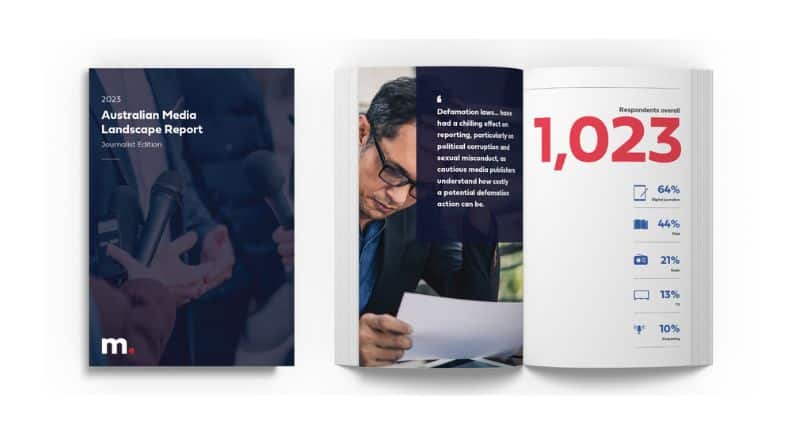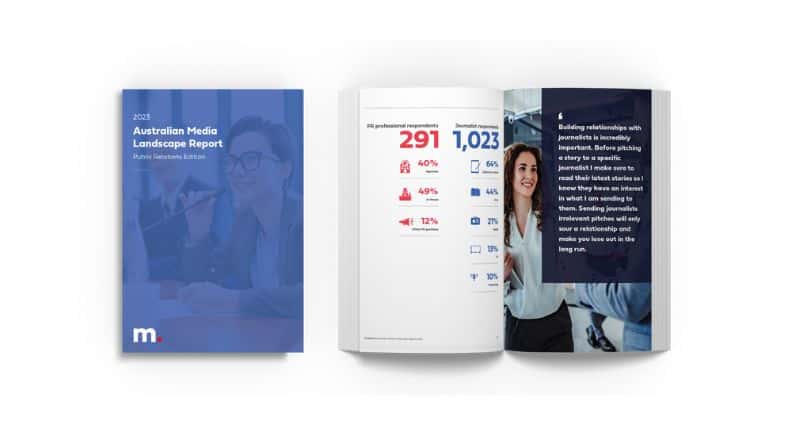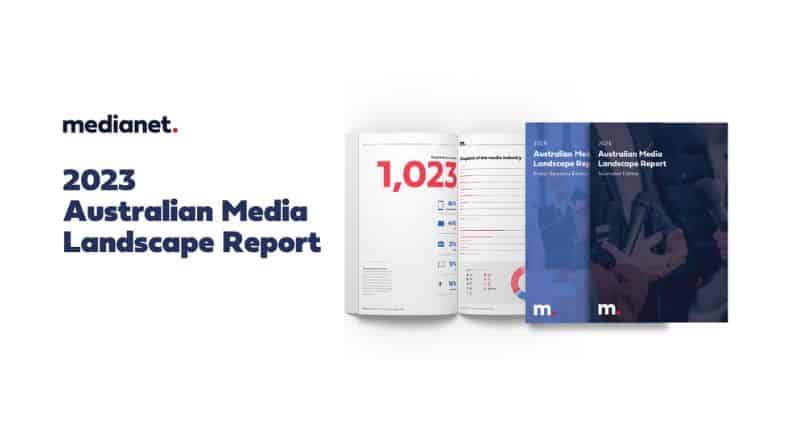Medianet has released its findings from its 2023 Australian Media Landscape Report.
The survey found more than 1000 Australian journalists have found half (49%) have withheld from publishing information that they knew to be true because of fear of defamation.
The annual survey includes insights into some of the challenges Australian journalists face in their work, including discrimination and abuse, burnout, unpaid work and gender pay gaps.
Forty-one per cent of journalists responded that they believed defamation laws in Australia are too strict in relation to the media.
Many respondents noted that editors, publishers or lawyers at their media organisations were highly conservative when it came to publishing potentially defamatory information due to the financial risks of being taken to court.

These findings come as several high profile media defamation cases await trial, including Lachlan Murdoch’s action against Crikey and Bruce Lehrmann’s civil case against news.com.au and Channel 10 for their reporting of Britanny Higgins‘ rape allegations in 2021.
Medianet managing director Amrita Sidhu said an overwhelming majority of survey respondents highlighted the struggles of working within the industry.
“Almost every single respondent [98%], felt that public interest journalism in Australia had been threatened in 2022, whether that be due to defamation laws, disinformation or lack of resources and staff, among other factors,” she said.
The anonymous survey found almost half of journalists (44%) have been abused or harassed due to their work in the media, with many reporting receiving death threats, online abuse or trolling or being physically assaulted. Seventy-two percent of respondents said they had experienced burnout in their media work.
“So many journalists discussed the personal toll of being overworked, underpaid and burnt out, along with tight deadlines, feeling undervalued, and covering difficult news stories including floods, war and COVID,” Sidhu said.

With 12% of respondents having also experienced racial discrimination or abuse as a part of their media work, surveyed journalists were asked to identify how they think the media industry or their workplace could improve representation and support for people of culturally and linguistically diverse backgrounds (CALD). The overwhelming majority of responses suggested more diverse hiring is needed, particularly in management or board positions.
Medianet also conducted a survey of Australian PR professionals, drawing comparisons between the two fields. PR respondents were found to earn more than journalist survey respondents, with almost half of PR professionals (47%) earning over $100,000 per year compared to a quarter of journalists (25%).
More than a third (35%) of PR professionals had previously worked as journalists before changing professions due to factors such as better lifestyle and pay.
Despite a slight decrease in the gender pay gap from previous years, women and non-binary journalists remained less represented in higher pay categories compared to men, and were also found to be less represented in chief-of-staff, photojournalist or cameraperson, publisher, presenter or announcer, editor or producer positions.
See also: Medianet Insights reveals cost of living dominated media coverage
